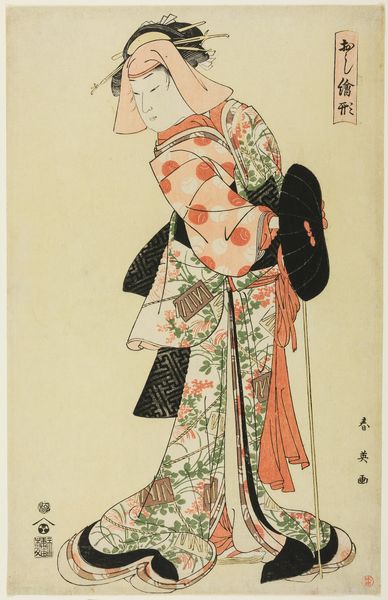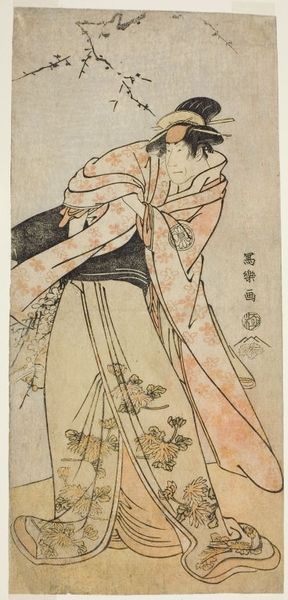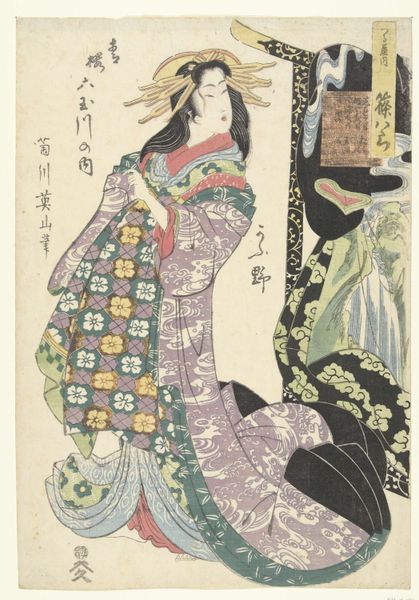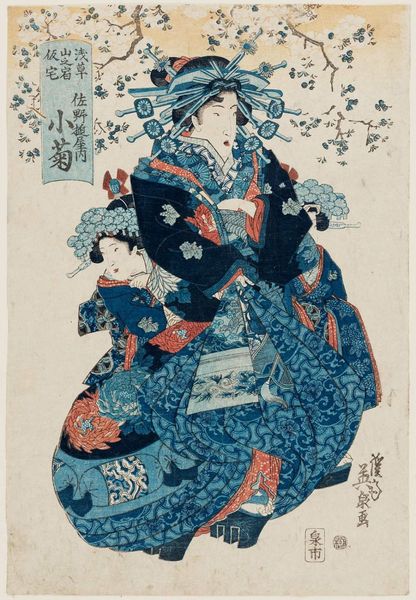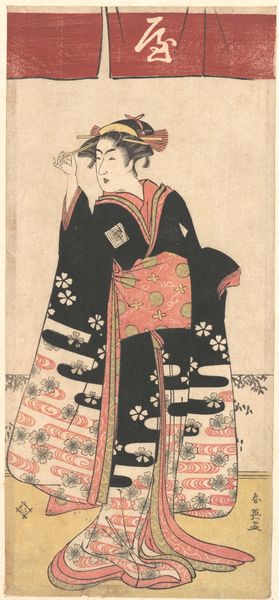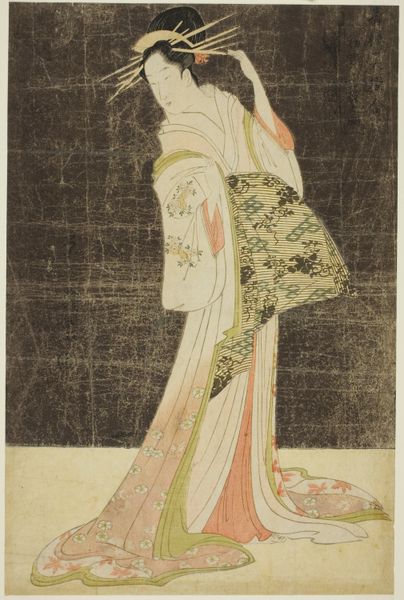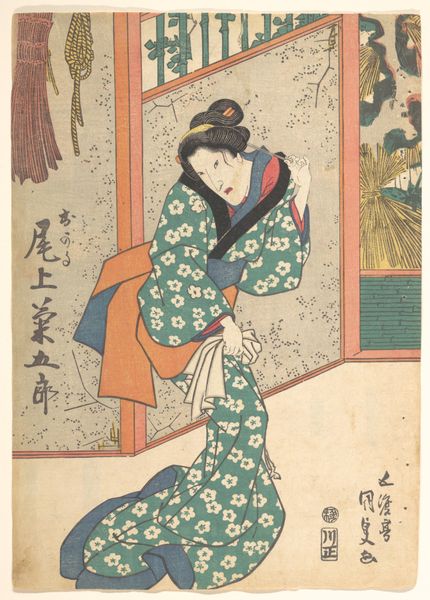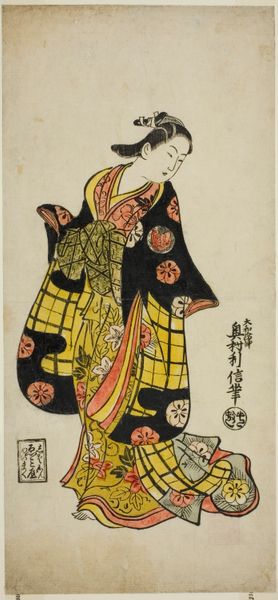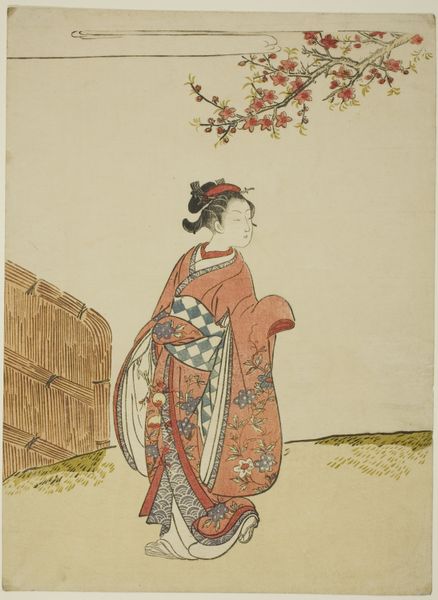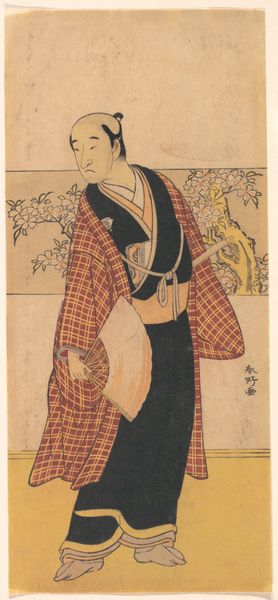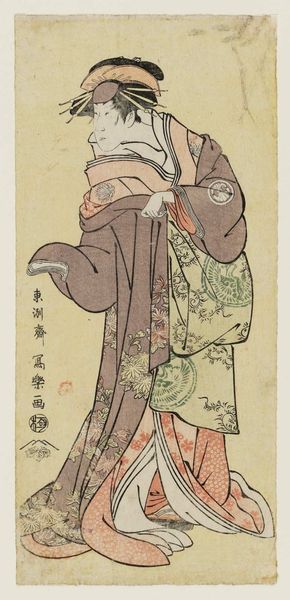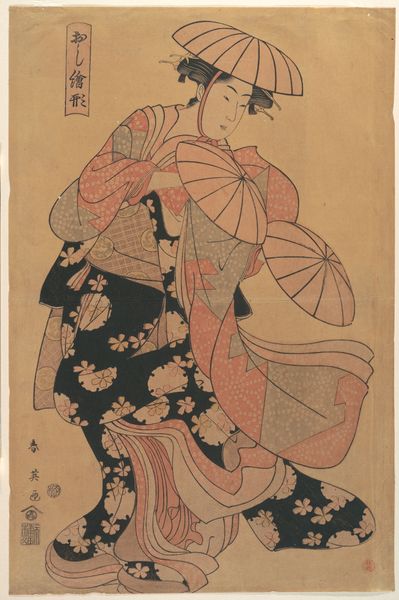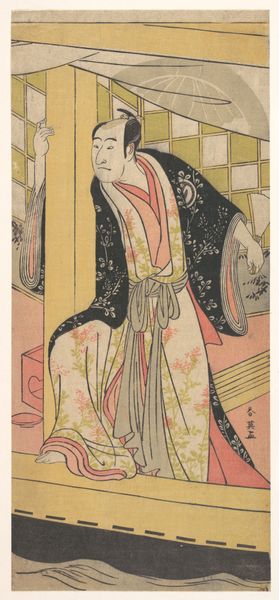
print, textile, woodblock-print
#
portrait
# print
#
asian-art
#
textile
#
ukiyo-e
#
figuration
#
historical fashion
#
woodblock-print
#
traditional dress
#
watercolour illustration
#
genre-painting
Dimensions: height 375 mm, width 257 mm
Copyright: Rijks Museum: Open Domain
Curator: I'm immediately struck by the exquisite details of this print; there’s an immediate elegance, a quiet beauty to it. Editor: Agreed. We're looking at "Courisane en blauwe winde," which translates to Courtesan with Morning Glories, a woodblock print created circa 1810 by Kikugawa Eizan. It’s part of the Rijksmuseum’s collection and a fantastic example of Ukiyo-e art. The title certainly sets a specific stage and context to explore! Curator: Indeed, "ukiyo-e," pictures of the floating world... the ephemeral. She’s turning slightly, isn't she, as if glancing back. Almost melancholic but refined, in the elaborate patterning of her kimono which creates an exquisite tension against the simple glory of the vines behind her. Editor: That tension between artifice and nature is central to its meaning, I think. The elaborate checker pattern on her kimono signifies her role and status within Edo society, a constructed identity against the natural, organic growth of the morning glories. It's a representation of courtesans in contemporary visual culture, specifically what role and status was accorded to those working in Yoshiwara, the pleasure district. Curator: Right, her patterned kimono is not merely clothing, but a language itself, indicating something of the courtesan's position within a highly structured and perhaps morally ambiguous societal role. And her glance carries a suggestion of introspection that deepens our viewing experience. I find a psychological weight in her pose and expression; it conveys more than simple representation. Editor: Certainly, that the print normalizes this lifestyle does tell us how central these themes were in public life. However, beyond the woman’s individual presentation and psychology, consider the proliferation of such imagery. What purpose did it serve to continually present the figure of the courtesan to wider society? Was it simply erotic and titillating, or something more complex? I find that asking what and who this image was FOR helps unlock greater societal narratives. Curator: Yes! The questions of public perception versus lived reality become essential and make this much more than just a beautiful print. I can sense reverberations between different dimensions in my reading: personal expression, social pressures, visual legacy and moral quandaries...fascinating, indeed. Editor: Agreed! What started as a beautiful image has brought us to the heart of complex narratives about society, status, and representation. Food for thought!
Comments
No comments
Be the first to comment and join the conversation on the ultimate creative platform.
